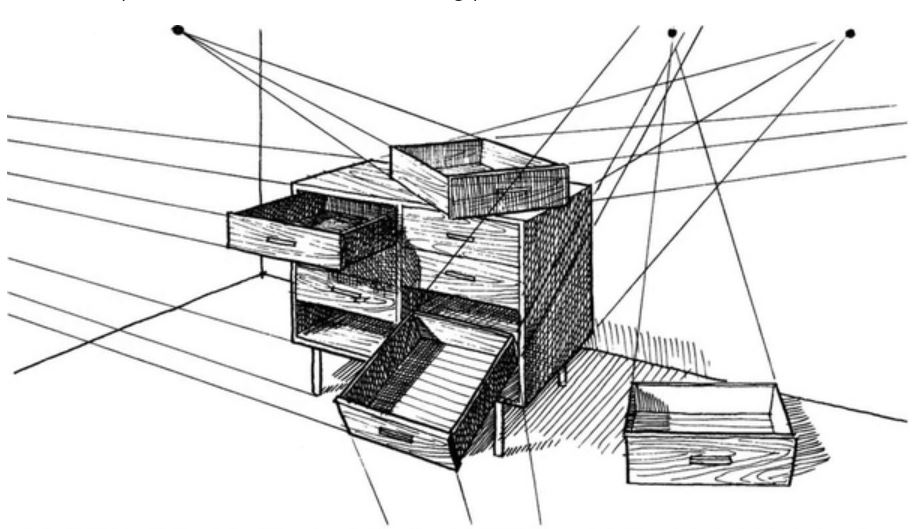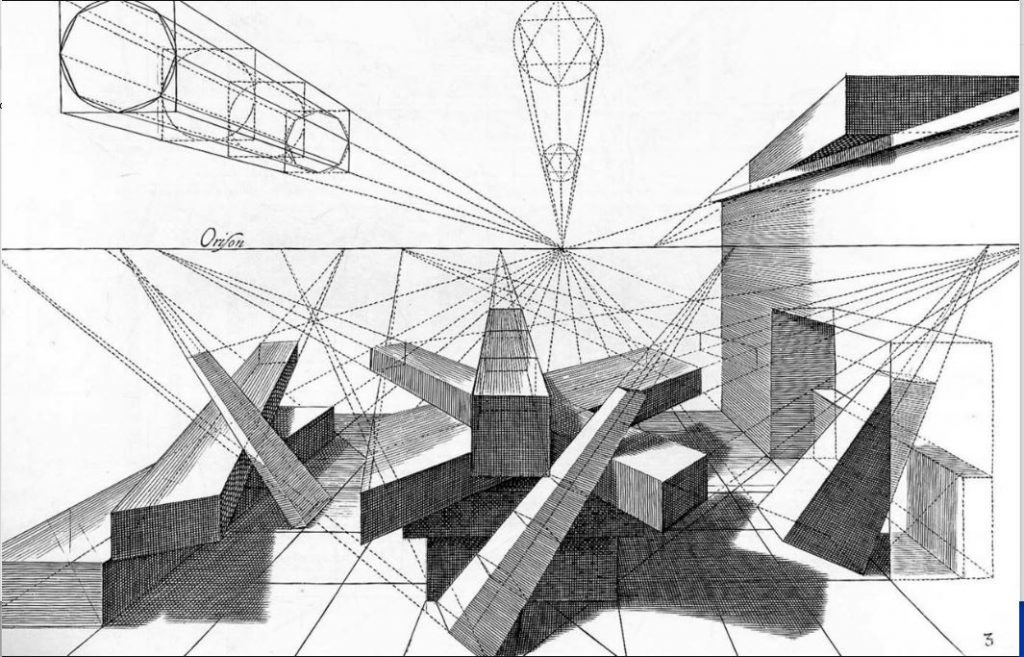Contents
Overview:
Objects in our world generally are placed randomly and are not parallel to each other. Since all objects that share vanishing points are parallel to each other, to create a believable world requires the use of many vanishing points, all relating to each other. The following relationships are important to understand:
- Because the horizon line is the artist’s eye level, there can only be one horizon line.
- The vanishing points of all objects that lie sit flat lie on the horizon line.
- The vanishing points for objects tilted up or down (like a children’s slide) are directly above or below the horizon line depending on the tilt.
- The one vanishing point for objects drawn in one-point perspective marks where the artist is relative to the whole scene. If the artist is looking at the scene from the center, then the one point is in the center of the horizon line. If the artist is viewing the scene from the right, then the one point is towards the right on the horizon line.
- Each of the two points defining a two-point perspective object lies on either side of the one-point vanishing point.
- As a two-point perspective object rotates, one of its points moves closer to the one-point point while the other moves further away.
Examples:





